AccessDeniedAccessDenied- Eviction Notice Forms
- Power of Attorney Forms Forms
- Bill of Sale (Purchase Agreement) Forms
- Lease Agreement Forms
- Rental Application Forms
- Living Will Forms Forms
- Recommendation Letters Forms
- Resignation Letters Forms
- Release of Liability Agreement Forms
- Promissory Note Forms
- LLC Operating Agreement Forms
- Deed of Sale Forms
- Consent Form Forms
- Support Affidavit Forms
- Paternity Affidavit Forms
- Marital Affidavit Forms
- Financial Affidavit Forms
- Residential Affidavit Forms
- Affidavit of Identity Forms
- Affidavit of Title Forms
- Employment Affidavit Forms
- Affidavit of Loss Forms
- Gift Affidavit Forms
- Small Estate Affidavit Forms
- Service Affidavit Forms
- Heirship Affidavit Forms
- Survivorship Affidavit Forms
- Desistance Affidavit Forms
- Discrepancy Affidavit Forms
- Guardianship Affidavit Forms
- Undertaking Affidavit Forms
- General Affidavit Forms
- Affidavit of Death Forms
Small Estate Affidavit
AccessDeniedAccessDenied
The passing of a loved one is a difficult time for any family member or close friends especially if it was a sudden passing. And because of this, it is possible that the deceased, the person who passed away, most likely did not leave a will behind. In most states, small courts require individuals to show an affidavit for a small estate and this will suffice to warrant claims and notify all creditors about it. Learn more about small estate affidavits below. Read More

By Type
Small Estate Affidavit
- Are there any documentation requirements as an attachment to the small estate affidavit?
- What should be done if there are other people who are entitled to the estate?
- How long does it take for the estate to be transferred to the claimant’s name?
- What should be done if the entity, creditor, or institution refuses to transfer the decedent’s property to the claimant after all debts and obligations have been paid?
The passing of a loved one is a difficult time for any family member or close friends especially if it was a sudden passing. And because of this, it is possible that the deceased, the person who passed away, most likely did not leave a will behind. In most states, small courts require individuals to show an affidavit for a small estate and this will suffice to warrant claims and notify all creditors about it. Learn more about small estate affidavits below.
What Is A Small Estate Affidavit?
Small estate affidavits are forms that a person, usually the executor or beneficiary of a will, can use in making claims of a deceased person’s properties. Also known as collection of personal property, this legal document gives them the authority to transfer or take responsibility for the assets of someone who passed away. By using a small estate affidavit, the authorized person avoids a long and costly probate process. The size of the estate also has to be considered in making a small estate affidavit. The deceased’s assets can only be considered small if its value is lower than the amount established by the state. Make sure to check with your state laws about the use of a small estate affidavit.
How To Write An Affidavit Of Title
Receiving a property of a deceased family member is a difficult thing to go through. But the process can be fairly simple and easy. All you need to do is create a small estate affidavit to help you take possession of their assets that may rightfully belong to you. Follow these steps on how you can start writing one:
Determine if you need a small estate affidavit
To be sure that you need to create a small estate affidavit, you have to check first if you meet the following criteria:
- The deceased has no last will and testament to their name, hence, no executor or beneficiary has been appointed.
- They have assets valued at $5000 up to the maximum amount set by the state that has to be distributed.
Keeping this in mind, if the deceased has a will, a small estate affidavit will not be necessary at this point. Should there be a need to write one, make sure that you have the correct form.
Identify the affiant and make a sworn statement
The affiant must be the person making the small estate claims. So if you are the one who will take responsibility for the deceased’s assets, then you should identify yourself in the affidavit. You must introduce yourself by indicating your name, age, place of residence, and relationship to the decedent. You also need to write a statement of truth to attest to the veracity and truthfulness of the affidavit you are making.
Confirm information about the decedent and the assets
Aside from your basic information, your affidavit must carry out information needed in filling out a small estate affidavit. The following statement of facts should be included in your document:
- Confirmation of the decedent’s date and place of decedent’s death. This information can be verified from the decedent’s official death certificate.
- Indicate the decedent’s outstanding funeral expenses if it needs to be paid or if it has already been paid. In the event that the expenses have been paid in full, description of the expenses and the amount owed should be specified as well.
- Information about other claims against the estate such as debts and liabilities which will be settled using the assets of the estate. Any value remaining will be passed on to the rightful heirs and beneficiaries of the decedent.
- Outline of the decedent’s personal properties to be distributed, if there are any. It should be a thorough description and the total value of the estate. Personal assets can be included such as vehicles and general possessions like jewelries, clothes, and art.
Sign the affidavit in the presence of a Notary
After filling out the small estate affidavit in full, check if you need two other people who can witness the affidavit and your signature. These witnesses have to go with you to the office of the notary public to notarize the document.
After going through all these steps, you are now ready to file your affidavit in court for small claims along with the official death certificate.
FAQs:
Are there any documentation requirements as an attachment to the small estate affidavit?
To verify that your claims are true, you may need to provide documentation as proof. Some of these documents are:
- Certified copy of the decedent’s death certificate
- Proof of the deceased ownership to the property being listed
- Proof of the affiant’s identity
What should be done if there are other people who are entitled to the estate?
You must obtain the signatures of other rightful beneficiaries of the property. They must sign the affidavit that they agree to let the affiant inherit all of the property that were listed.
How long does it take for the estate to be transferred to the claimant’s name?
Each state has different guidelines as to when you can file for a transfer of property using the small estate affidavit. As you wait for the eligibility period, you may already prepare the affidavit and its attachments.
What should be done if the entity, creditor, or institution refuses to transfer the decedent’s property to the claimant after all debts and obligations have been paid?
The person or the corporation who has the decedent’s property must turn over them to the claimant after filing the affidavit in the small claims court and was approved. If they fail to do so, the claimant can file a civil case against them in a civil court. Once the estate has been properly turned over to the claimant, they are not liable to the estate and cannot be sued anymore.
The small estate procedure is relatively simple to file and complete. Doing this allows you to gain access to your deceased loved one’s assets and property so you will be able to manage it properly. Once the process is completed, it will be transferred to your name and you will now have control over the estate.